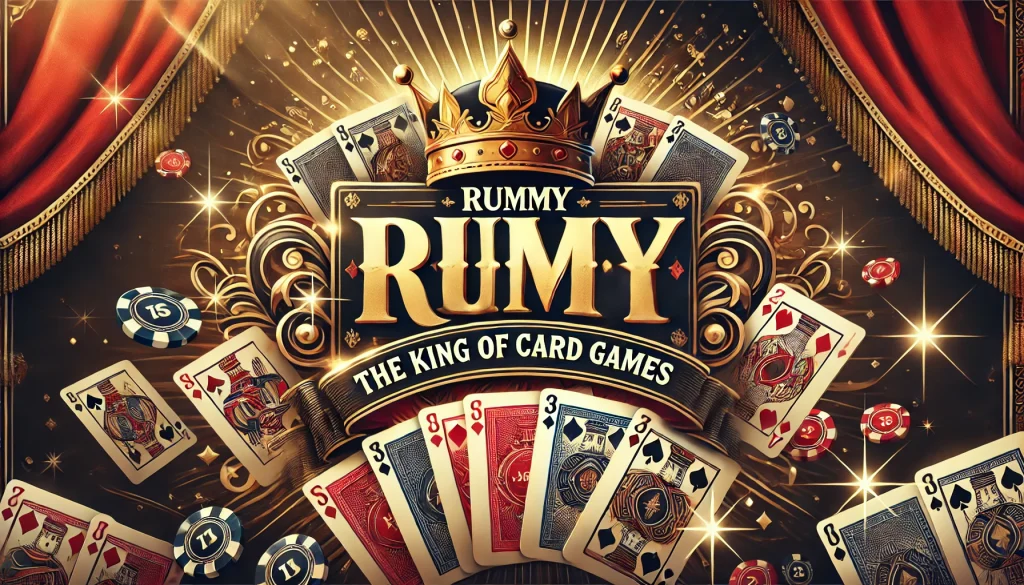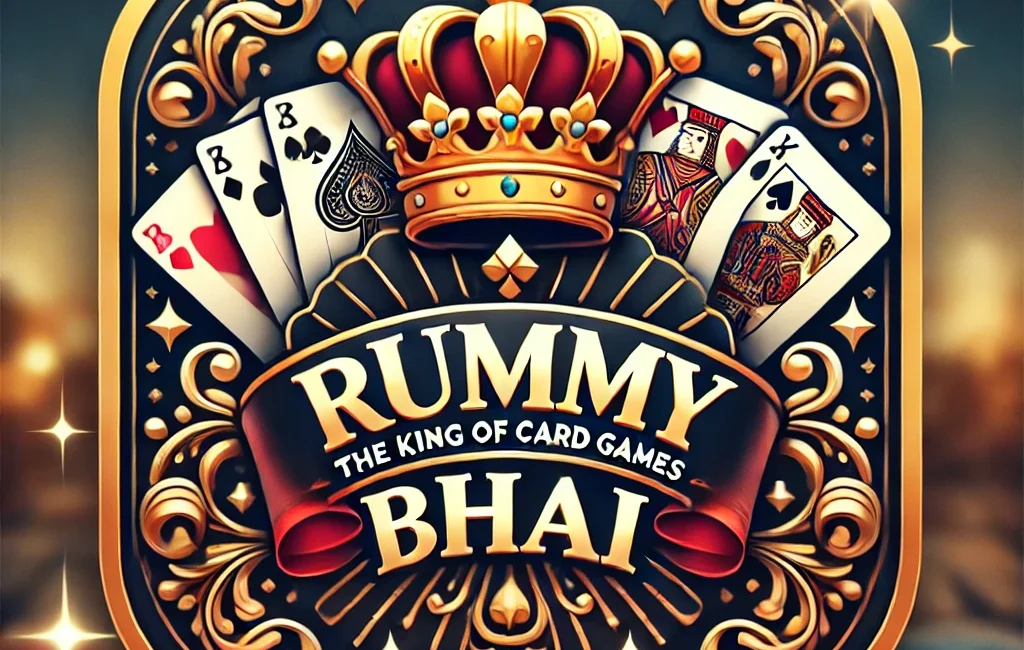
The Entertaining World of Rummy Bhai Rummy Bhai is a fascinating card game with a long and illustrious history that has become extremely popular throughout the world, especially in South Asia. Rummy’s beginnings can be found in the traditional card games played in Europe in the early 19th century. As different cultures and regional customs influenced the game over time, it changed. It is thought that Rummy Bhai in particular has developed as a variation that differs from its forebears by introducing special rules & gameplay components. “Bhai,” which means “brother” in Hindi and a number of other languages, is a fitting name for the game given its social nature.
It promotes friendly competition and camaraderie & is frequently played with friends and family. The game’s fundamental mechanics have been preserved while it has evolved to accommodate players’ shifting tastes over the years. Rummy Bhai took on regional flavors as it expanded throughout the world, creating variants that appeal to a wide range of consumers. Because of its versatility, it has maintained its allure and broad acceptance over time.
Overview of the game and its goal. When playing Rummy Bhai, you’ll need a standard deck of cards, which usually has 52 cards. The game is adaptable for both small and large gatherings because it can support two to six players. Making legitimate sets & sequences out of the cards dealt to each player is the goal.
Rules and gameplay. Three or more consecutive cards of the same suit make up a sequence, whereas three or four cards of the same rank but different suits make up a set. Each player receives a set number of cards at the start of the game, typically seven or ten, depending on the established rules. With one card face-up to begin the discard pile, the remaining cards form a draw pile.
Each player takes turns selecting a card from the discard or draw pile, after which they discard one card from their hand. Winning the game and using strategic elements. The game goes on until a player declares “Rummy,” which ends the round, and successfully creates sets and sequences. Managing one’s hand strategically is one of the most important parts of Rummy Bhai. Because it can have a big impact on their chances of winning, players must carefully consider which cards to keep and which to discard.
Players must also keep an eye on their opponents’ movements because this can reveal important information about their tactics and possible hands. Rummy Bhai offers a number of variants to suit varying tastes and ability levels. A common variation is “Indian Rummy,” which allows for more intricate gameplay & usually uses two decks of cards. One of the two sequences that players must create in Indian Rummy must be pure—that is, devoid of any jokers.
Because of this additional layer of complexity, players must consider their card combinations & strategies carefully. “Gin Rummy,” which is frequently played by two players, is another variation. In this variation, players try to minimize the total value of unmelded cards in their hands while forming sets and sequences. By knocking or going “gin,” a player indicates that they have used all of their cards to form valid combinations, and the game is over. For players who prefer fast-paced games, Gin Rummy offers an exciting alternative because it places an emphasis on strategic play and prompt decision-making. Regional variations also exist, which take into account regional laws and traditions.
For example, some variations might include jokers or wild cards that can be used in place of any other card, giving the game a more unpredictable element. These variations show the diversity of cultures surrounding Rummy Bhai while also improving the gameplay experience. Players must gain a deep comprehension of psychology and strategy in order to succeed at Rummy Bhai. Keeping a close eye on the cards your opponents discard is a basic tip.
Players can use this information to gain a better understanding of their hands and decide which cards to keep or discard. For example, it might be better to keep a card that your opponent tosses away if it has the potential to help you finish a sequence. Effective hand management is an additional key tactic.
Players shouldn’t concentrate on just one combination; instead, they should try to generate several possible sets and sequences at once. As the game goes on, this method improves adaptability & enables faster changes. Players can also determine their chances of finishing their hands by keeping track of which cards have already been played. In Rummy Bhai, bluffing can also be a useful strategy.
Players can cause confusion & mislead their opponents about their true intentions by discarding cards that might appear valuable to them while keeping important cards for themselves. The use of bluffing too frequently, however, can result in predictable patterns that astute opponents may pick up on. The appeal of Rummy Bhai is not limited by geography; it is found in many cultures worldwide.
For example, it is not merely a game but a beloved custom that is frequently played during family get-togethers and festivals in India. Because it encourages relationships between players, the game is a vital component of parties and free time. Gin Rummy and other variations have become popular in Western nations as well.
Because it balances skill and chance, the game is appealing to casual players while still providing depth for those looking for competitive play. By enabling players from various backgrounds to interact and compete against one another in virtual environments, online platforms have further increased its appeal. Also, Rummy Bhai has become ingrained in popular culture thanks to television series and films that feature characters playing fierce matches. By attracting new players and guaranteeing that the game will continue to be relevant across generations, this representation has added to its appeal. The Development of Competitive Rummy.
Competitions and contests. The popularity of organized tournaments & competitions devoted to Rummy Bhai is also increasing. Participants from a range of skill levels flock to these events to display their skills & vie for rewards. structures and formats. Various formats, such as round-robin play or knockout rounds, are frequently used in tournaments to enable players to compete in multiple matches during a single event.
Players find the game thrilling and difficult because of its diversity of formats. The Championship of Rummy & Online Competitions. The yearly Rummy Championship in India, where players from all over the nation come together to compete for hefty cash prizes and titles, is one noteworthy example. In addition to enhancing the competitive element of Rummy Bhai, these tournaments help players who are passionate about the game connect with one another.
Players can now participate from the comfort of their homes thanks to online platforms’ adoption of tournament formats. A common feature of virtual tournaments are leaderboards & rankings, which heighten the excitement as competitors aim to advance in the rankings and hone their skills. The dynamics of the game are greatly influenced by the psychology of Rummy Bhai. Players can gain an advantage over rivals by comprehending human behavior.
For example, identifying trends in the discards of opponents can provide insight into their plans and tactics. By being able to read their opponent’s facial expressions & body language, players can determine whether they are bluffing or actually having trouble with their hand. Also, controlling one’s own emotions is essential for preserving concentration when playing games. Excitation or frustration can impair judgment & cause rash choices that could endanger a player’s chances of winning. Effective athletes frequently develop emotional resilience, which enables them to remain composed under duress and make well-considered decisions based on reasoning rather than feeling.
Also, social dynamics are present in multiplayer games such as Rummy Bhai. Gamers have to manage rivalries and alliances while striking a balance between friendship and competition. Gaining an understanding of these social cues can improve strategic decision-making and increase game success in general. The question of whether Rummy Bhai is more of a skill-based or luck-based game has long been debated among fans.
One could argue that skill is a major factor in determining results. Over time, players who have a solid grasp of probability, strategy, & card management have a higher chance of success. In competitive play, the ability to read opponents’ moves and modify one’s strategy accordingly can make all the difference. On the other hand, luck plays a role as well.
Even the best player may be at a disadvantage if they are dealt unfavorable cards because of the inherent randomness in card distribution. Because players have to deal with unforeseen situations while attempting to win, this element of chance makes every round more exciting. In the end, Rummy Bhai represents a careful balancing act between talent and chance.
Even though good players might gradually get better, serendipitous events can change the game in unexpected ways. This dichotomy adds to the game’s timeless appeal by drawing in both serious competitors looking to master the game and casual players looking for fun.
